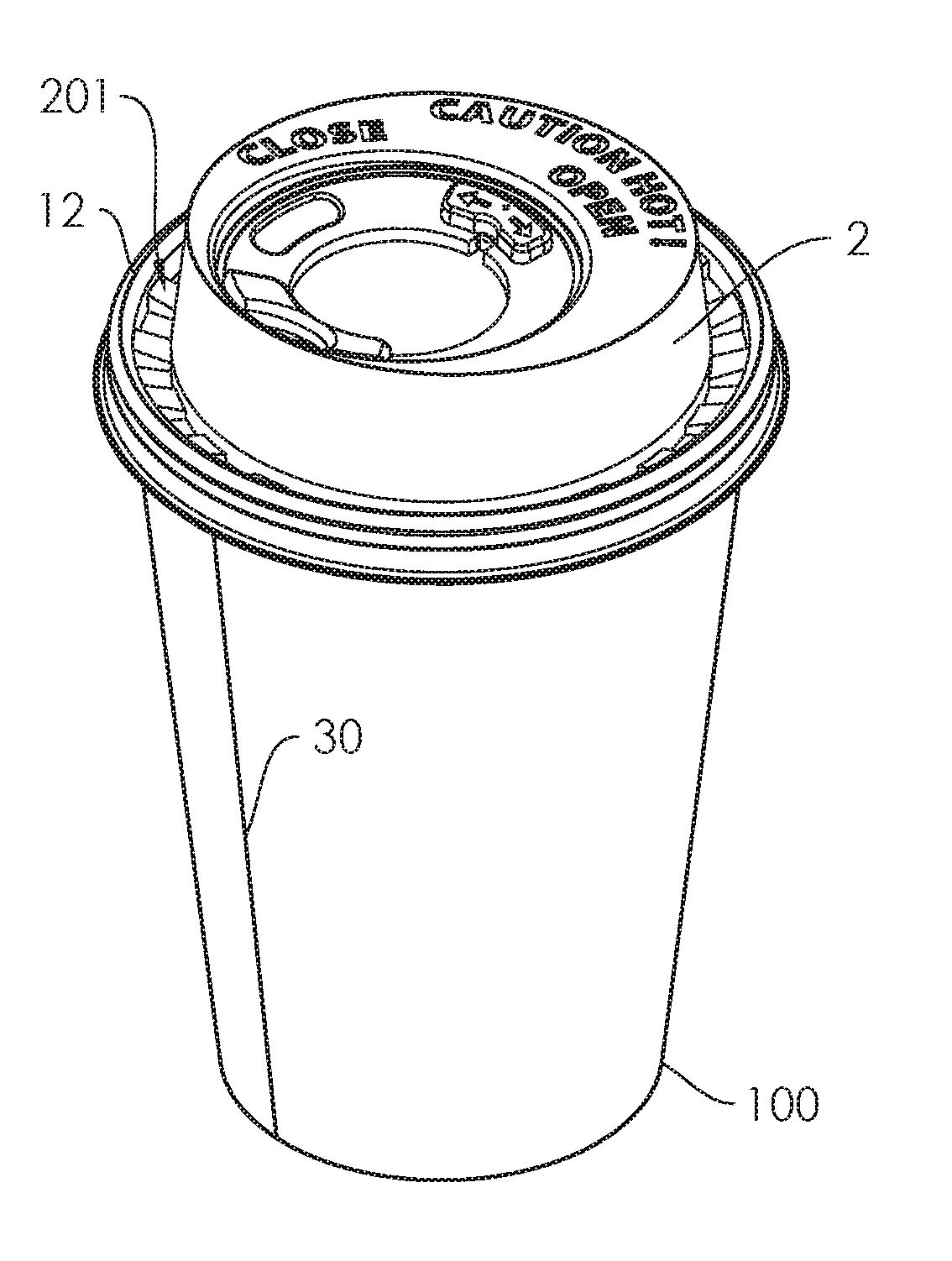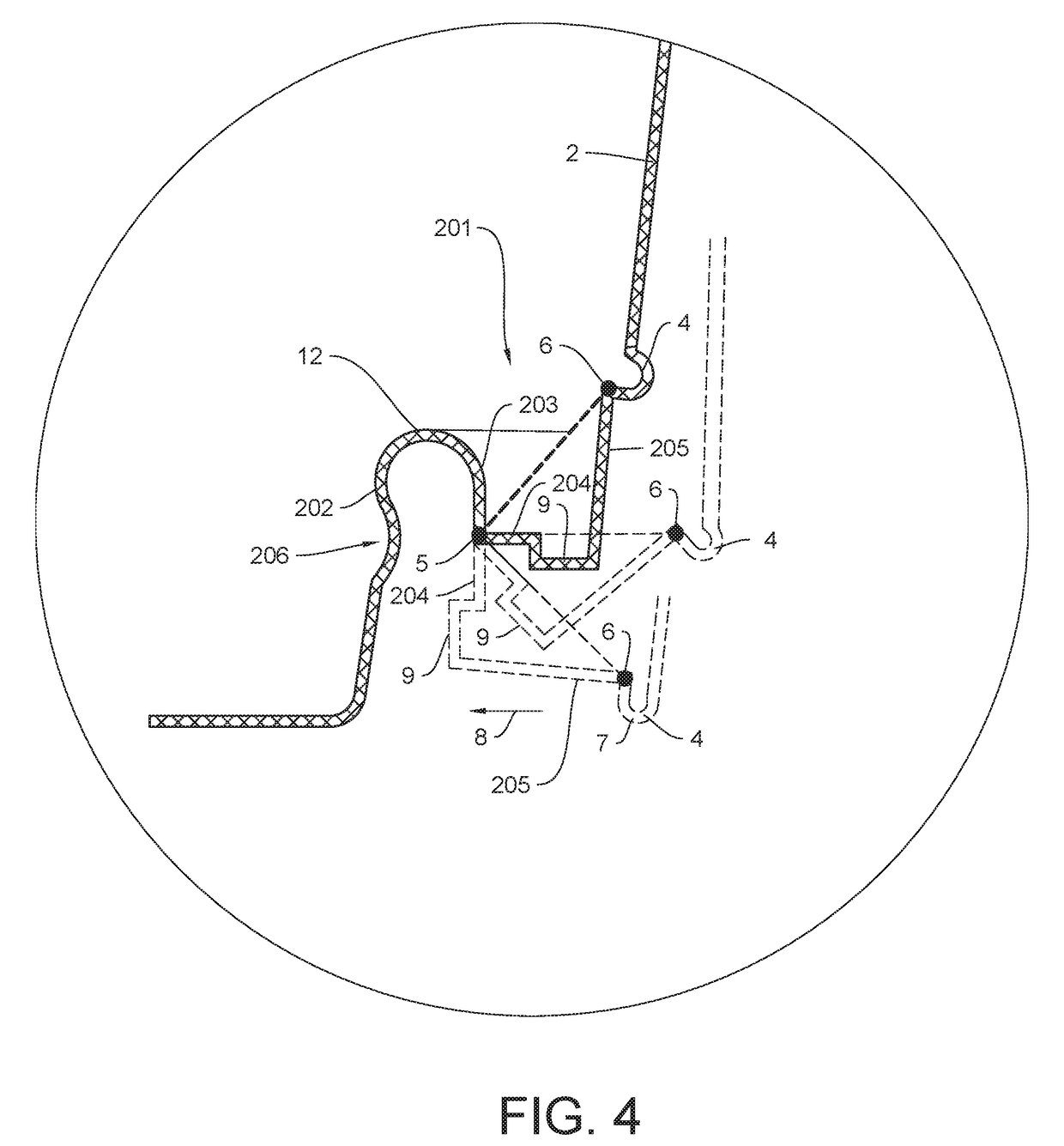Locking Lid and Container Assembly with Manufacturing Method
a manufacturing method and lid technology, applied in the field of container and lid combinations, can solve the problem of not preventing the liquid from flowing through the drink opening, and achieve the effect of maximizing the retention of lids and preventing lids
- Summary
- Abstract
- Description
- Claims
- Application Information
AI Technical Summary
Benefits of technology
Problems solved by technology
Method used
Image
Examples
Embodiment Construction
[0103]Referring now to the drawings with more specificity, the following specifications generally describe a number of lid-container combinations or container assemblies operable for enhancing lid-to-container retention. The prior art perceives a need for a container assembly of low cost construction with unique structural features for preventing inadvertent lid removal from the lower liquid container while further operating to prevent liquid leakage via the junction site of the lid and seam of the lower liquid container. The address these shortcomings in the prior art, the present invention basically provides a container assembly for maximizing lid-to-container retention.
[0104]The container assembly according to the present invention preferably comprises a liquid container as at 100 or 110 and a container lid as at 200 or 210. Certain methods for forming the liquid container(s) 100 and 110 and container lids 200 and 210 are also contemplated. FIGS. 1-3A together depict a series of ...
PUM
 Login to View More
Login to View More Abstract
Description
Claims
Application Information
 Login to View More
Login to View More - R&D
- Intellectual Property
- Life Sciences
- Materials
- Tech Scout
- Unparalleled Data Quality
- Higher Quality Content
- 60% Fewer Hallucinations
Browse by: Latest US Patents, China's latest patents, Technical Efficacy Thesaurus, Application Domain, Technology Topic, Popular Technical Reports.
© 2025 PatSnap. All rights reserved.Legal|Privacy policy|Modern Slavery Act Transparency Statement|Sitemap|About US| Contact US: help@patsnap.com



